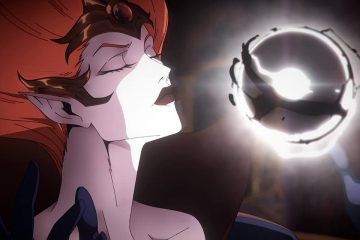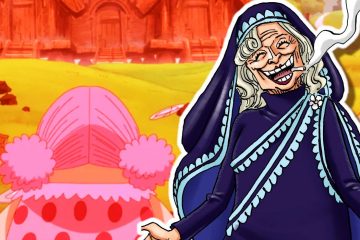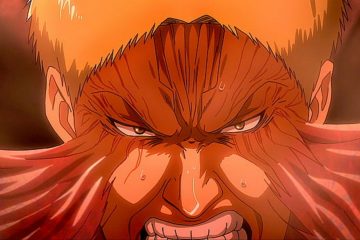Environmentalism and nature are strong themes in Hayao Miyazaki’s films. Nausicaä of the Valley of the Wind takes traditional fantasy tropes and complicates them, sending an important message about agency, choice, and activism to contemporary audiences. Nausicaä’s planet is staring down the barrel of a mass extinction event. Humans polluted the world into something that can no longer support humanity. The larger kingdoms distract themselves by burning trees and playing vicious wargames as the world dies. It’s hard to say that this is a metaphor when it hits so close to home in light of current events. Rather than a metaphor or allegory, the kingdoms are a direct retelling of the real world — just with airships and bigger bugs.Spores rain down like snow and stars, and they destroy humans within minutes. Nausicaä marvels at the pollen, but she doesn’t seem to begrudge the new lifeforce that rose out of pollution, nor its ability to remake the world. She does begrudge, quite easily, how humanity fights among itself as the world burns. Civilization has collapsed, and the Toxic Jungle destroys entire villages at a time. And though great insects, the Ohmu, directly attack humans sometimes, they hold a knowledge that only a few understand. Nausicaä finds out in the finale that the insects guard the jungle so that the humans don’t pollute the planet even further. Though humans are destroying the planet, there are many good people in Nausicaä, from Lord Yupa and Oh-baba to every kind farmer and honorable soldier. Nausicaä isn’t the only good person in this story. And yet, she is the planet’s savior because of her choices, open-mindedness, and self-sacrifice. Nausicaä, Oh-baba, Asbel and his mother, Lord Yupa, and the Ohm are all part of a vital equation.Nausicaä has good ideas and high ideals, and she always acts on them in every deed, big and small. The only time she uses violence is when the Tolmekian kingdom invades her home and murders her father. Lord Yupa stops her from killing, urging her to stay her sword and think ahead. Knowing that she’s indeed capable of violence haunts her. Nausicaä’s virtues, flaws, and role in her village are all on purpose. It’s important that she’s a princess in this fable — but not because royalty is inherently responsible or intelligent. Rather, she serves as an example of someone taking off their blinders and waking up to the immediate problems of the world and the role they can play in fixing them.RELATED: One of the Least Popular Studio Ghibli Movies Has One of the Most Important HeroinesRELATED: My Neighbor Totoro’s Theatrical Rerelease Shows the Ghibli Movie Is Still Relevant Today
Environmentalism and nature are strong themes in Hayao Miyazaki’s films. Nausicaä of the Valley of the Wind takes traditional fantasy tropes and complicates them, sending an important message about agency, choice, and activism to contemporary audiences. Nausicaä’s planet is staring down the barrel of a mass extinction event. Humans polluted the world into something that can no longer support humanity. The larger kingdoms distract themselves by burning trees and playing vicious wargames as the world dies. It’s hard to say that this is a metaphor when it hits so close to home in light of current events. Rather than a metaphor or allegory, the kingdoms are a direct retelling of the real world — just with airships and bigger bugs.
Spores rain down like snow and stars, and they destroy humans within minutes. Nausicaä marvels at the pollen, but she doesn’t seem to begrudge the new lifeforce that rose out of pollution, nor its ability to remake the world. She does begrudge, quite easily, how humanity fights among itself as the world burns. Civilization has collapsed, and the Toxic Jungle destroys entire villages at a time. And though great insects, the Ohmu, directly attack humans sometimes, they hold a knowledge that only a few understand. Nausicaä finds out in the finale that the insects guard the jungle so that the humans don’t pollute the planet even further. Though humans are destroying the planet, there are many good people in Nausicaä, from Lord Yupa and Oh-baba to every kind farmer and honorable soldier. Nausicaä isn’t the only good person in this story. And yet, she is the planet’s savior because of her choices, open-mindedness, and self-sacrifice. Nausicaä, Oh-baba, Asbel and his mother, Lord Yupa, and the Ohm are all part of a vital equation.
Nausicaä has good ideas and high ideals, and she always acts on them in every deed, big and small. The only time she uses violence is when the Tolmekian kingdom invades her home and murders her father. Lord Yupa stops her from killing, urging her to stay her sword and think ahead. Knowing that she’s indeed capable of violence haunts her. Nausicaä’s virtues, flaws, and role in her village are all on purpose. It’s important that she’s a princess in this fable — but not because royalty is inherently responsible or intelligent. Rather, she serves as an example of someone taking off their blinders and waking up to the immediate problems of the world and the role they can play in fixing them.
#Nausicaä #Savior #Blue #Nausicaä #Valley #Wind
Note:- (Not all news on the site expresses the point of view of the site, but we transmit this news automatically and translate it through programmatic technology on the site and not from a human editor. The content is auto-generated from a syndicated feed.))



